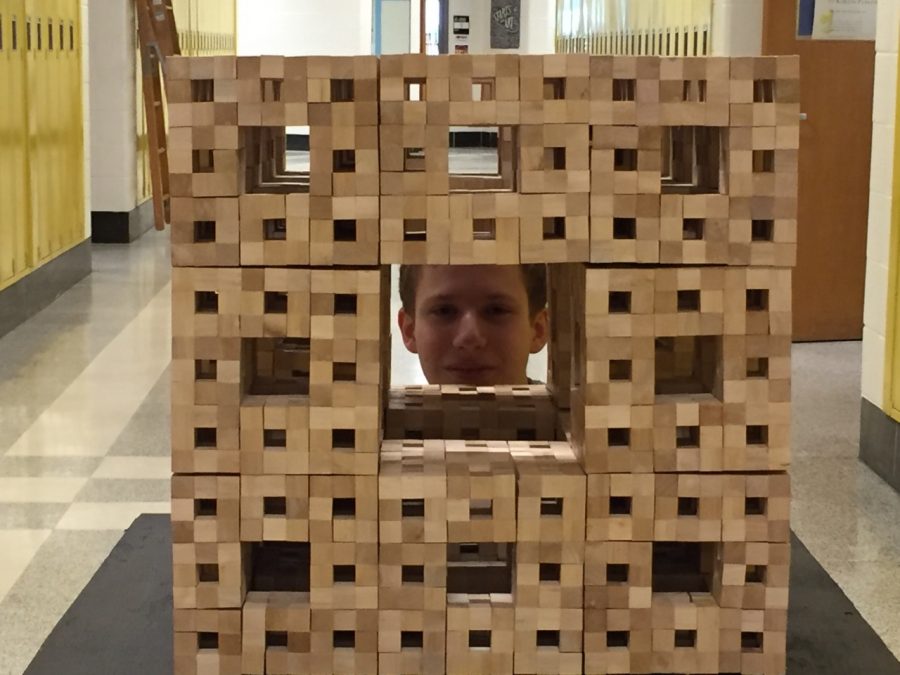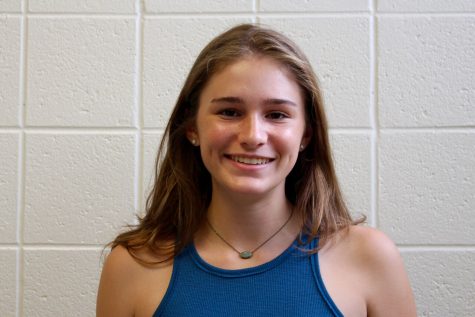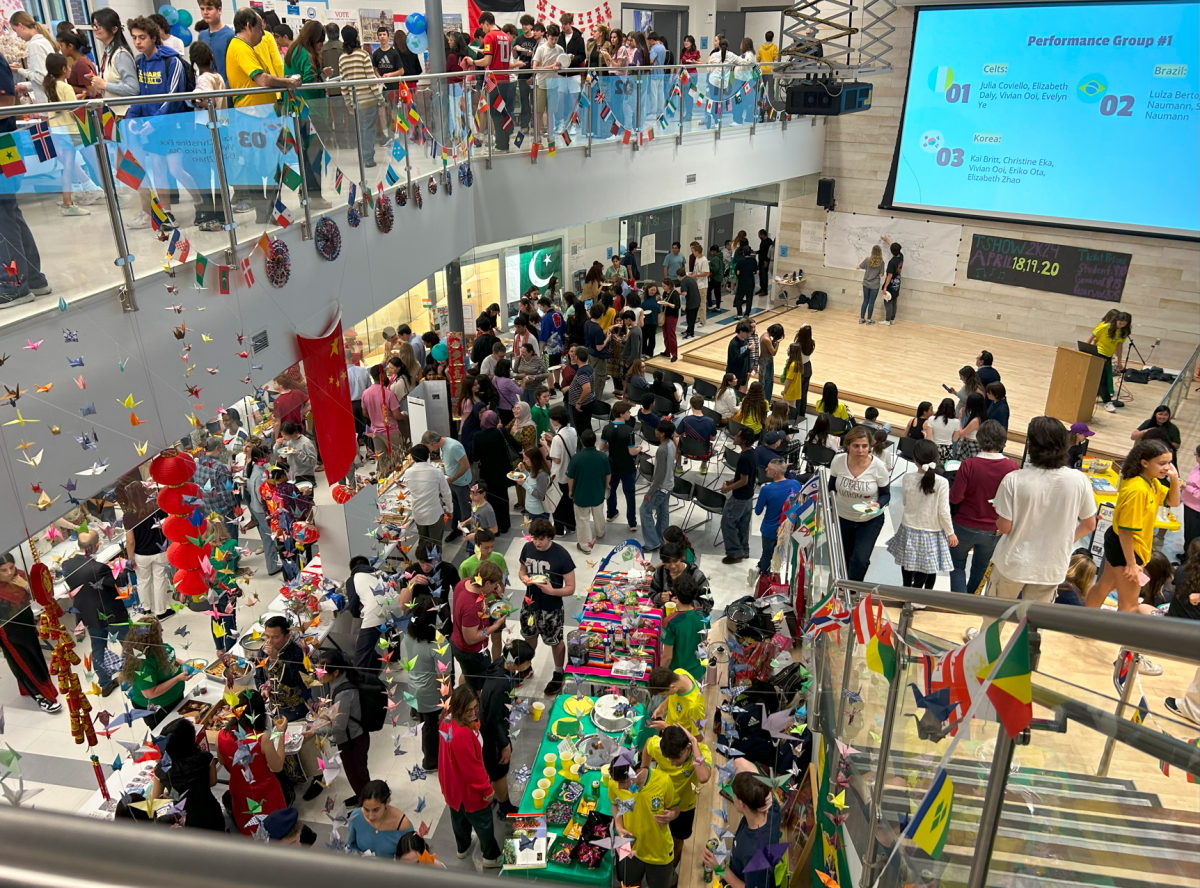Math students construct cubic Menger sculpture
Joseph Tseytlin, one of the sculptors, stands with the finished product. Photo courtesy Jean Diamond.
October 17, 2016
Math students focus on finding the final solution, while artists brush along a blank canvas with an open-mind, creating their work as they go. As some Multi-variable Calculus students found, combining these different disciplines can create extraordinary works of art.
Last spring, seven of math teacher Susan Wildstrom’s students—Matthew Fields, Jessy Kline, Ari Mindell, Harry Papaioannou, Xavier Roberts-Gaal, Nate Stevens and Joseph Tseytlin—were given the chance to test their math skills hands-on by building a level three Menger sculpture over the course of two weeks. The sculpture is now located by the entrance to the media center.
The Menger sponge is a math-based sculpture; it’s a giant cube constructed from three separate, more complex, cubic sublevels. The students used 8,000 cubes, placing them on top of each other to create a final product. After the 2016 seniors graduated, Wildstrom wanted to give last year’s juniors a final project that allowed them the freedom to experiment with math.
“I’ve never really gotten to use my hands in math,” Tseytlin said. “I don’t think anyone [from Whitman] has invested so much time or effort for a math-based project.”
Art teacher Jean Diamond assisted Wildstrom and her students by providing the sculpture’s coating and helping oversee proper construction.
“It’s their genius and their concept,” Diamond said. “So with my art history and their math education, we combined and appreciated each other’s different disciplines.”
Wildstrom supervised the students’ work, providing them with a room to store and finish their product, and helped them embrace the opportunity to highlight their mathematical talent. She had already contributed, having taught a year’s worth of math to prepare her students for this project.
“They had this idea and concept, but didn’t know how to put it together,” Diamond said. “When one discipline overlaps with another discipline it equals success.”








